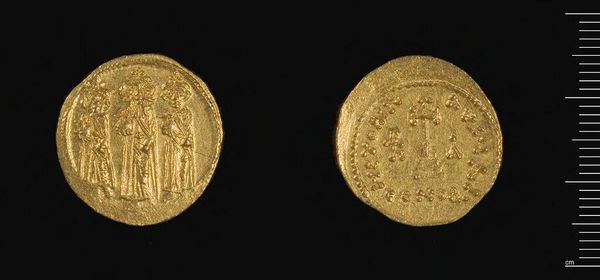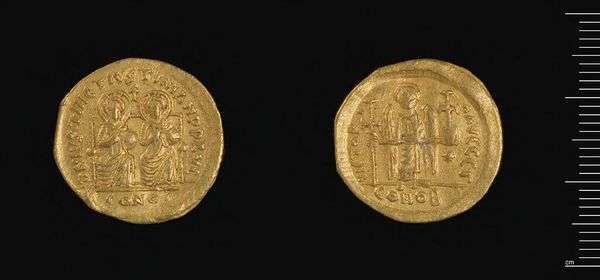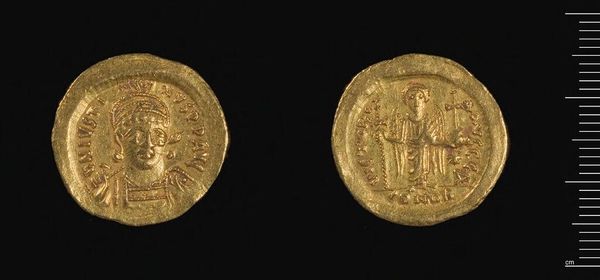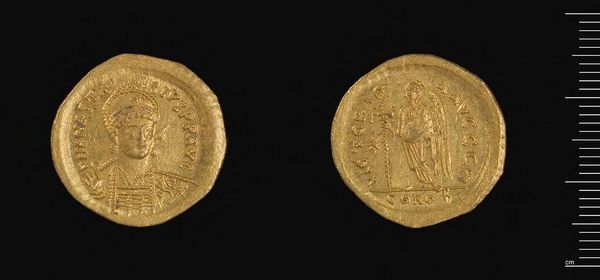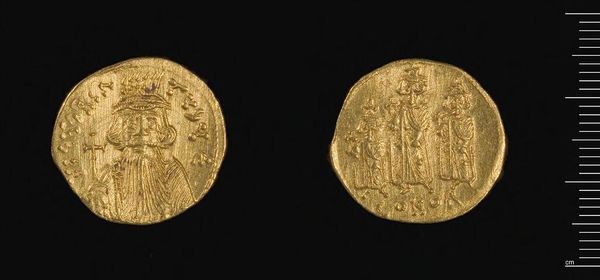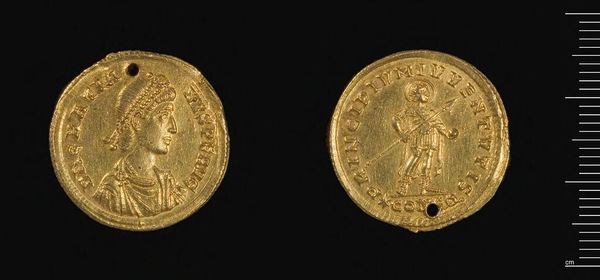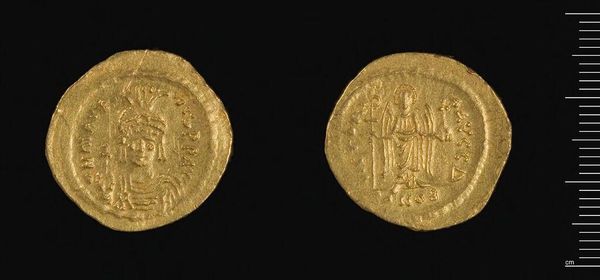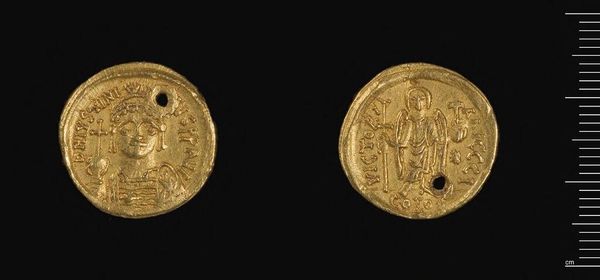
Histamenon of the Augusta Theodora Makrembolitissa c. 1055 - 1056
0:00
0:00
Dimensions: 4.43 g
Copyright: CC0 1.0
Curator: The Histamenon of the Augusta Theodora Makrembolitissa. The Harvard Art Museums hold this artifact, minted from gold. The work is an example of Byzantine artistry. Editor: It feels small, but dense. There’s something inherently weighty about holding power in your palm. I am curious about the symbolic narrative being depicted here. Curator: Visually, the coin presents clear symbolic divisions. On one side, Christ Pantocrator, his form frontal, austere. The other side, the Empress alongside a religious figure, likely Mary. The composition underscores an iconographic program rooted in religious authority. Editor: This juxtaposition seems deliberate. It raises interesting questions about Theodora's legitimacy as a ruler. Was this an attempt to align her temporal power with divine sanction? Curator: Precisely. The materiality itself—gold—speaks to wealth, power, and endurance. We can think about the visual impact of something like this circulating widely in the Byzantine empire. Editor: The presence of Theodora on currency is a bold statement. The coin becomes more than a medium of exchange. It's a powerful message of female authority in what we understand to be a patriarchal society. Curator: Indeed, and the precision of the engraving, the use of relief to create depth, all contribute to an object of both political and aesthetic significance. Editor: Considering Theodora's context, the work is a fascinating object lesson in how visibility and power are negotiated. Thank you for pointing out these formal and historical components of this fascinating work.
Comments
No comments
Be the first to comment and join the conversation on the ultimate creative platform.

